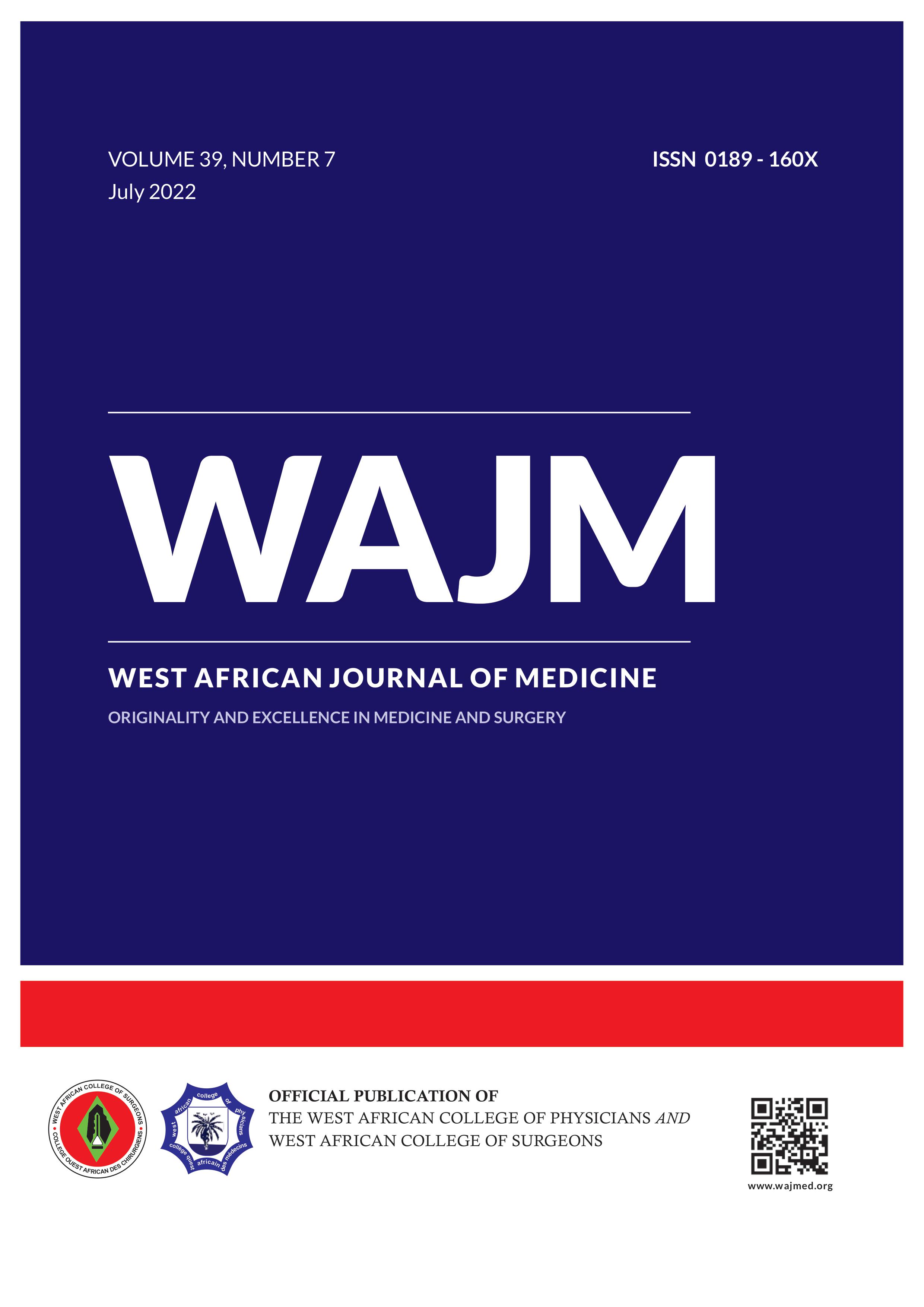ORIGINAL: Effect of Obesity on Resistin Concentrations in Normal, Pre-Obese and Obese Apparently Healthy Nigerian-Africans
West Afr J Med . 2022 Jul 31;39(7):791-702.
Keywords:
Cardiometabolic Risks; Healthy Nigerian-Africans; Non-Diabetes; Non-Obese; Obesity; Overweight; Resistin.Abstract
Abstract in English, FrenchBackground: Among Caucasians, conflicting findings exist on resistin in obesity and its relation to metabolic indices, with scarcity of such in Nigerian-Africans. Therefore, the study assessed plasma resistin and explored its relationship with obesity and selected cardiometabolic risks.
Methods: A cross-sectional comparative-analytical study on 87 randomly-selected non-diabetic Nigerians allocated into three groups by the WHO criteria: 24 normal; 23 pre-obese and 40 obese. Resistin was measured via enzyme-linked immunosorbent assay. One-way Analysis of Variance (ANOVA) and Independent Kruskal-Wallis test determined differences in BMI categories. Spearman's correlation and Multivariate Logistic Regression assessed relationships. A sub-group analysis excluding subjects with first time incidental finding of high blood pressure, determined further associations.
Results: Resistin concentrations trended towards higher levels in obese than normal controls {Mean ± SD, 6.72 ± 4.25 ng/mL versus 5.10 ± 2.58 ng/mL}, with significantly (p<0.05) higher obesity indices, fasting insulin (FI) and HOMA-IR in obese than normal controls. Hyperresistinaemia involved 8(9.2%) subjects as against 79(90.8%) with normoresistinaemia, {Mean ± SD, 15.1 ± 2.6 ng/mL versus 5.3 ± 2.8 ng/mL, (p<0.001)}. Log (Ln10) hyperresistinaemia was significantly (p<0.05) positively correlated to obesity indices (BMI, r=0.29, p=0.006; WC, r=0.23, p=0.04) but not to HOMA-IR, FI, FBG, SBP, DBP and age. Ln10 Hyperresistinaemia in females was significantly (p=0.05, OR: 1.12, 95% CI, 1.0-1.25) associated with central obesity by the IDF criteria in both unadjusted and step-wise age, sex, SBP & DBP adjusted models. Similar finding was for generalized obesity, albeit with low odds in all subjects (p=0.009), with persistence in the step-wise age, sex and SBP/DBP adjusted models. In the sub-group analysis, resistin showed similar findings to that of the whole sample population.
Conclusion: Resistin concentrations trended towards higher levels in obese than normal healthy non-diabetic Nigerian-Africans. Its lack of correlation with HOMA-IR and mild correlations/marginal relations to obesity indices may suggest possible interplay of other proinflammatory cytokines or hormones which may be evaluated in further studies.
Keywords: Cardiometabolic Risks; Healthy Nigerian-Africans; Non-Diabetes; Non-Obese; Obesity; Overweight; Resistin.


